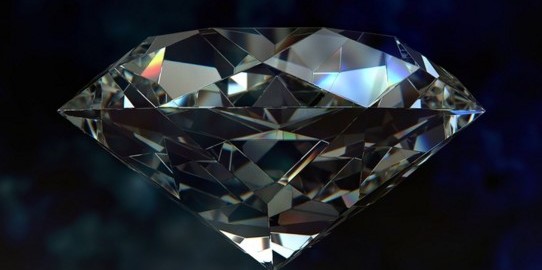Diamond Clarity – 4 C’s

As we have been examining in-depth the elements that make-up the rare, natural diamond, we will take a look at the next property that gives diamonds their value – diamond clarity. According to the GIA, the clarity of a diamond refers to the “absence of inclusions and blemishes” (GIA). Due to the sheer amount of time, heat and pressure that occurs to form a diamond, irregularities may form. They may be internal (inclusions) irregularities to its carbon structure or external characteristics (blemishes) that can affect the clarity, and consequentially the value.
Diamond Clarity – Inclusions
Inclusions may occur from crystals from a foreign material, structural imperfections as well as defects arising from the cutting process. There are 10 types of inclusions that Beyond the 4 C’s, gives a great in-depth look at the various types of diamond inclusions should you be interested in learning more.
Blemishes
Blemishes on the other-hand are surface level attributes. They can occur due to structural imperfections and damages during the cutting process if handled incorrectly. There are 10 types as well.
GIA Clarity Grades
GIA certified diamonds became the standard of diamond grading in the 1950’s. Thus, most diamonds will be graded under the following scale for clarity which is based on visible inclusions and blemishes under a 10 x microscope (loupe) with a “dark field illumination”. It is as follows:
- Flawless (FL) – no inclusions or blemishes visible under 10 x magnification
- Internally Flawless (IF) – no visible inclusions under 10 x magnifications and small blemishes on surface
- Very, Very Slightly Included (VVS1 & VVS2) – minute inclusions that are difficult to spot by a skilled grader under 10 x magnification
- Very Slightly Included (VS1 and VS2) – minor inclusions that are somewhat easy to spot by a trained grader under 10 x magnification. Inclusions at this level are still likely to be invisible without magnification
- Slightly Included (SI1 & SI2) – inclusions that are easy to spot when viewed under 10 x magnification
- Included (I1, I2 and I3) – clearly visible to trained grader under 10 x magnification. These inclusions may threaten the durability and brilliance of the diamond.
In fact, on the GIA’s website, they have a wonderful interactive clarity chart that explains the various grades.
At Schwanke-Kasten Jewelers we use GIA certified diamonds from leading suppliers like Ritani, Forevermark and Naledi Engagement Rings. When purchasing a GIA certified diamond, you are provided a card detailing all the attributes of the diamond: cut, clarity, color and carat weight. Our goal is to provide you a confident and stress-free experience when shopping for your true love’s ring. Contact Schwanke-Kasten Jewelers today to schedule your personalized consultations with one of our GIA certified gemologists.